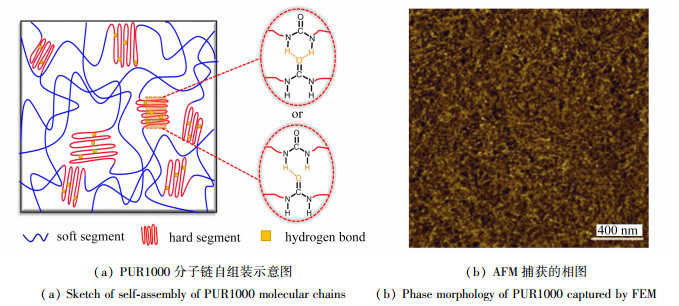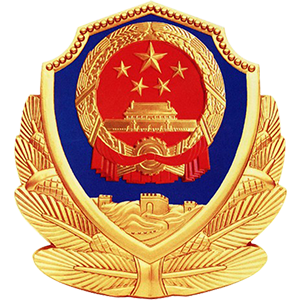Dynamic Behaviors of Polyurea Elastomer: Experimental Characterization, Microscopic Mechanisms and Constitutive Modeling
-
摘要:
聚脲弹性体在冲击防护领域有广阔的应用前景,然而,目前对于聚脲在高压冲击、层裂等情况下的变形失效物理机制仍不明晰,尚缺乏有效描述聚脲在多种应变率及应力状态下动态变形和失效的本构及损伤模型. 针对这些挑战性问题,该文结合实验表征、分子动力学仿真以及宏观力学建模,对聚脲弹性体在不同应变率、冲击压力及应力状态下的变形失效行为进行了系统研究. 通过建立聚脲全原子和两种粗粒化模型及微结构演化分析,揭示了聚脲在高应变率拉伸、高压冲击等载荷下的变形微观物理机制,以及高应力三轴度下的动态失效物理机制. 建立了考虑强冲击下应变率-温度-压力耦合效应的聚脲弹性体本构模型,以及包括孔洞形核准则、流动法则的多种变形模式统一描述的宏观损伤模型. 经验证,所建立的宏观力学模型能够正确描述聚脲在冲击载荷下的动态变形失效行为. 该工作可为后续聚脲弹性体的优化设计及冲击防护应用提供指导.
Abstract:The application of polyurea elastomer to impact protection has broad prospects. However, the physical mechanisms of dynamic deformation and failure of the polyurea under high-pressure impact, delamination, and other conditions are still unclear. Besides, effective constitutive and damage models to describe the dynamic behaviors of polyurea under various strain rates and stress states are still scarce. In response to these challenging issues, the dynamic behaviors of polyurea elastomers under different strain rates, impact pressures, and stress states were systematically studied through experimental characterization, molecular dynamics simulation, and macroscopic mechanical modeling. Full atomic and 2 coarse-grained models for polyurea were established, its microstructure evolution was analyzed, and the microscopic physical mechanisms of deformation and failure of polyurea under high-strain-rate tension, high-pressure impact and high stress triaxiality loading, were revealed. A constitutive model for polyurea elastomers was established in view of the coupling effects of strain rates, temperature and pressure under strong impact. A macroscopic damage model uniformly describing multiple deformation modes was built, including void nucleation criteria and void flow rules. Through verification, the established macroscopic mechanical models can accurately describe the dynamic behaviors of polyurea under impact loading. This work provides a guidance for the optimization design and impact protection application of polyurea elastomers in the future.
-
Key words:
- polyurea elastomer /
- dynamic behavior /
- void damage /
- constitutive model /
- molecular dynamics
edited-byedited-by1) (我刊编委庄茁、柳占立来稿) -
表 1 实验和MD模拟获得的PUR1000性能
Table 1. The physical parameters of PUR1000 obtained by experiments and the MD modeling
表 2 各变形模式的载荷条件与应力三轴度
Table 2. Loading conditions and stress triaxiality for different deformation modes
deformation mode x y z xz triaxiality uniaxial stress $\dot{e}_x$ σyy=0 σzz=0 exz=0 0.333 plane stress $\dot{e}_x$ $\dot{e}_y=\dot{e}_x$ σzz=0 exz=0 0.667 tensile-shear $\dot{e}_x$ ey=0 ez=0 $\dot{e}_{x z}=a \dot{e}_x(a=2, 3, 4)$ ~1.6~2.3 uniaxial strain $\dot{e}_x$ ey =0 ez=0 exz=0 ~4.33 plane strain $\dot{e}_x$ $\dot{e}_y=\dot{e}_x$ ez=0 exz=0 ~8.76 equal triaxial tension $\dot{e}_x$ $\dot{e}_y=\dot{e}_x$ $\dot{e}_z=\dot{e}_x$ exz=0 ∞ 表 3 PUR1000失效模型材料参数
Table 3. Material parameters of the failure model the PUR1000
A/MPa C10/MPa m ξ0/s-1 Svoid/MPa λc 1 200 30 0.15 5×105 320 0.3 -
[1] BARSOUM R. History of high strain rate elastomeric polymers (HSREP) application[M]//BARSOUM R G. Elastomeric Polymers With High Rate Sensitivity. Amsterdam: Elsevier, 2015: 1-4. [2] ROLAND C M, FRAGIADAKIS D, GAMACHE R M. Elastomer-steel laminate armor[J]. Composite Structures, 2010, 92(5): 1059-1064. doi: 10.1016/j.compstruct.2009.09.057 [3] BOGOSLOVOV R B, ROLAND C M, GAMACHE R M. Impact-induced glass transition in elastomeric coatings[J]. Applied Physics Letters, 2007, 90(22): 221910. doi: 10.1063/1.2745212 [4] TEKALUR S A, SHUKLA A, SHIVAKUMAR K. Blast resistance of polyurea based layered composite materials[J]. Composite Structures, 2008, 84(3): 271-281. doi: 10.1016/j.compstruct.2007.08.008 [5] CHEN C, WANG X, HOU H, et al. Effect of strength matching on failure characteristics of polyurea coated thin metal plates under localized air blast loading: experiment and numerical analysis[J]. Thin-Walled Structures, 2020, 154: 106819. doi: 10.1016/j.tws.2020.106819 [6] LI T, ZHANG C, XIE Z, et al. A multi-scale investigation on effects of hydrogen bonding on micro-structure and macro-properties in a polyurea[J]. Polymer, 2018, 145: 261-271. doi: 10.1016/j.polymer.2018.05.003 [7] CASTAGNA A M, PANGON A, CHOI T, et al. The role of soft segment molecular weight on microphase separation and dynamics of bulk polymerized polyureas[J]. Macromolecules, 2012, 45(20): 8438-8444. doi: 10.1021/ma3016568 [8] IQBAL N, TRIPATHI M, PARTHASARATHY S, et al. Polyurea coatings for enhanced blast-mitigation: a review[J]. RSC Advances, 2016, 6(111): 109706-109717. doi: 10.1039/C6RA23866A [9] AMIRKHIZI A V, ISAACS J, MCGEE J, et al. An experimentally-based viscoelastic constitutive model for polyurea, including pressure and temperature effects[J]. Philosophical Magazine, 2006, 86(36): 5847-5866. doi: 10.1080/14786430600833198 [10] QIAO J, AMIRKHIZI A V, SCHAAF K, et al. Dynamic mechanical and ultrasonic properties of polyurea[J]. Mechanics of Materials, 2011, 43(10): 598-607. doi: 10.1016/j.mechmat.2011.06.012 [11] CHENG J, LIU Z L, LUO C C, et al. Revealing the high-frequency attenuation mechanism of polyurea-matrix composites[J]. Acta Mechanica Sinica, 2020, 36(1): 130-142. doi: 10.1007/s10409-019-00906-6 [12] ROLAND C M, CASALINI R. Effect of hydrostatic pressure on the viscoelastic response of polyurea[J]. Polymer, 2007, 48(19): 5747-5752. doi: 10.1016/j.polymer.2007.07.017 [13] CHOI T, FRAGIADAKIS D, ROLAND C M, et al. Microstructure and segmental dynamics of polyurea under uniaxial deformation[J]. Macromolecules, 2012, 45(8): 3581-3589. doi: 10.1021/ma300128d [14] MOTT P H, GILLER C B, FRAGIADAKIS D, et al. Deformation of polyurea: where does the energy go?[J]. Polymer, 2016, 105: 227-233. doi: 10.1016/j.polymer.2016.10.029 [15] RINALDI R G, BOYCE M C, WEIGAND S J, et al. Microstructure evolution during tensile loading histories of a polyurea[J]. Journal of Polymer Science (Part B): Polymer Physics, 2011, 49(23): 1660-1671. doi: 10.1002/polb.22352 [16] GONG C, CHEN Y, LI T, et al. Free volume based nonlinear viscoelastic model for polyurea over a wide range of strain rates and temperatures[J]. Mechanics of Materials, 2021, 152: 103650. doi: 10.1016/j.mechmat.2020.103650 [17] GUO H, GUO W, AMIRKHIZI A V, et al. Experimental investigation and modeling of mechanical behaviors of polyurea over wide ranges of strain rates and temperatures[J]. Polymer Testing, 2016, 53: 234-244. doi: 10.1016/j.polymertesting.2016.06.004 [18] MOTT P H, TWIGG J N, ROLAND D F, et al. High-speed tensile test instrument[J]. Review of Scientific Instruments, 2007, 78(4): 045105. doi: 10.1063/1.2719643 [19] YI J, BOYCE M C, LEE G F, et al. Large deformation rate-dependent stress-strain behavior of polyurea and polyurethanes[J]. Polymer, 2006, 47(1): 319-329. doi: 10.1016/j.polymer.2005.10.107 [20] QI H J, BOYCE M C. Stress-strain behavior of thermoplastic polyurethanes[J]. Mechanics of Materials, 2005, 37(8): 817-839. doi: 10.1016/j.mechmat.2004.08.001 [21] CHO H, RINALDI R G, BOYCE M C. Constitutive modeling of the rate-dependent resilient and dissipative large deformation behavior of a segmented copolymer polyurea[J]. Soft Matter, 2013, 9(27): 6319. doi: 10.1039/c3sm27125k [22] CLIFTON R J, JIAO T. Pressure and strain-rate sensitivity of an elastomer: (1) pressure-shear plate impact experiments; (2) constitutive modeling[M]//BARSOUM R G. Elastomeric Polymers With High Rate Sensitivity. Amsterdam: Elsevier, 2015: 17-65. [23] RANSOM T C, AHART M, HEMLEY R J, et al. Acoustic properties and density of polyurea at pressure up to 13.5 GPa through Brillouin scattering spectroscopy[J]. Journal of Applied Physics, 2018, 123(19): 195102. doi: 10.1063/1.5031427 [24] ZHU Y, LIECHTI K M, RAVI-CHANDAR K. Direct extraction of rate-dependent traction-separation laws for polyurea/steel interfaces[J]. International Journal of Solids and Structures, 2009, 46(1): 31-51. doi: 10.1016/j.ijsolstr.2008.08.019 [25] HEYDEN S, LI B, WEINBERG K, et al. A micromechanical damage and fracture model for polymers based on fractional strain-gradient elasticity[J]. Journal of the Mechanics and Physics of Solids, 2015, 74: 175-195. doi: 10.1016/j.jmps.2014.08.005 [26] CUI Z, BRINSON L C. Thermomechanical properties and deformation of coarse-grained models of hard-soft block copolymers[J]. Physical Review E, 2013, 88(2): 022602. doi: 10.1103/PhysRevE.88.022602 [27] ZHU S, LEMPESIS N, IN'T VELD P J, et al. Molecular simulation of thermoplastic polyurethanes under large tensile deformation[J]. Macromolecules, 2018, 51(5): 1850-1864. doi: 10.1021/acs.macromol.7b02367 [28] ZHU S, LEMPESIS N, IN'T VELD P J, et al. Molecular simulation of thermoplastic polyurethanes under large compressive deformation[J]. Macromolecules, 2018, 51(22): 9306-9316. doi: 10.1021/acs.macromol.8b01922 [29] CHANTAWANSRI T L, SLIOZBERG Y R, ANDZELM J W, et al. Coarse-grained modeling of model poly (urethane urea) s: microstructure and interface aspects[J]. Polymer, 2012, 53(20): 4512-4524. doi: 10.1016/j.polymer.2012.07.056 [30] GRUJICIC M, PANDURANGAN B, KING A E, et al. Multi-length scale modeling and analysis of microstructure evolution and mechanical properties in polyurea[J]. Journal of Materials Science, 2011, 46(6): 1767-1779. doi: 10.1007/s10853-010-4998-y [31] FUJIMOTO K, TANG Z, SHINODA W, et al. All-atom molecular dynamics study of impact fracture of glassy polymers Ⅰ: molecular mechanism of brittleness of PMMA and ductility of PC[J]. Polymer, 2019, 178: 121570. doi: 10.1016/j.polymer.2019.121570 [32] MAKKE A, PEREZ M, ROTTLER J, et al. Predictors of cavitation in glassy polymers under tensile strain: a coarse-grained molecular dynamics investigation[J]. Macromolecular Theory and Simulations, 2011, 20(9): 826-836. doi: 10.1002/mats.201100006 [33] BALJON A R C, ROBBINS M O. Simulations of crazing in polymer glasses: effect of chain length and surface tension[J]. Macromolecules, 2001, 34(12): 4200-4209. doi: 10.1021/ma0012393 [34] MAHAJAN D K, SINGH B, BASU S. Void nucleation and disentanglement in glassy amorphous polymers[J]. Physical Review E, 2010, 82: 011803. [35] BAI Y, LIU C, HUANG G, et al. A hyper-viscoelastic constitutive model for polyurea under uniaxial compressive loading[J]. Polymers, 2016, 8(4): 133. doi: 10.3390/polym8040133 [36] CHEVELLARD G, RAVI-CHANDAR K, LIECHTI K M. Modeling the nonlinear viscoelastic behavior of polyurea using a distortion modified free volume approach[J]. Mechanics of Time-Dependent Materials, 2012, 16(2): 181-203. doi: 10.1007/s11043-011-9146-9 [37] GAMONPILAS C, MCCUISTON R. A non-linear viscoelastic material constitutive model for polyurea[J]. Polymer, 2012, 53(17): 3655-3658. doi: 10.1016/j.polymer.2012.06.030 [38] SHIM J, MOHR D. Rate dependent finite strain constitutive model of polyurea[J]. International Journal of Plasticity, 2011, 27(6): 868-886. doi: 10.1016/j.ijplas.2010.10.001 [39] GRUJICIC M, HE T, PANDURANGAN B, et al. Experimental characterization and material-model development for microphase-segregated polyurea: an overview[J]. Journal of Materials Engineering and Performance, 2012, 21(1): 2-16. doi: 10.1007/s11665-011-9875-6 [40] LI C, LUA J. A hyper-viscoelastic constitutive model for polyurea[J]. Materials Letters, 2019, 63: 877-880. [41] FILONOVA V, LIU Y, FISH J. Singlescale and multiscale models of polyurea and high-density polyethylene (HDPE) subjected to high strain rates[M]//BARSOUM R G. Elastomeric Polymers With High Rate Sensitivity. Amsterdam: Elsevier, 2015: 233-256. [42] KEY C T, GORFAIN J E. A modified rate-dependent ballistic impact model for polyurea[M]//BARSOUM R G. Elastomeric Polymers With High Rate Sensitivity. Amsterdam: Elsevier, 2015: 304-318. [43] CLIFTON R J, WANG X, JIAO T. A physically-based, quasilinear viscoelasticity model for the dynamic response of polyurea[J]. Journal of the Mechanics and Physics of Solids, 2016, 93: 8-15. doi: 10.1016/j.jmps.2016.04.027 [44] GURSON A L. Plastic Flow and fracture behavior of ductile materials incorporating void nucleaiion, growth and interaction[D]. Providence: Brown University, 1975. [45] TVERGAARD V, NEEDLEMAN A. Analysis of the cup-cone fracture in a round tensile bar[J]. Acta Metallurgica, 1984, 32(1): 157-169. doi: 10.1016/0001-6160(84)90213-X [46] ZAÏRI F, NAÏT-ABDELAZIZ M, GLOAGUEN J M, et al. A physically-based constitutive model for anisotropic damage in rubber-toughened glassy polymers during finite deformation[J]. International Journal of Plasticity, 2011, 27(1): 25-51. doi: 10.1016/j.ijplas.2010.03.007 [47] CHALLIER M, BESSON J, LAIARINANDRASANA L, et al. Damage and fracture of polyvinylidene fluoride (PVDF) at 20℃: experiments and modelling[J]. Engineering Fracture Mechanics, 2006, 73(1): 79-90. doi: 10.1016/j.engfracmech.2005.06.007 [48] GEARING B, ANAND L. On modeling the deformation and fracture response of glassy polymers due to shear-yielding and crazing[J]. International Journal of Solids and Structures, 2004, 41(11/12): 3125-3150. [49] CHOWDHURY K A, BENZERGA A A, TALREJA R. An analysis of impact-induced deformation and fracture modes in amorphous glassy polymers[J]. Engineering Fracture Mechanics, 2008, 75(11): 3328-3342. doi: 10.1016/j.engfracmech.2007.08.007 [50] MIEHE C, HOFACKER M, SCHÄNZEL L M, et al. Phase field modeling of fracture in multi-physics problems, part Ⅱ: Coupled brittle-to-ductile failure criteria and crack propagation in thermo-elastic-plastic solids[J]. Computer Methods in Applied Mechanics and Engineering, 2015, 294: 486-522. doi: 10.1016/j.cma.2014.11.017 [51] NARAYAN S, ANAND L. Fracture of amorphous polymers: a gradient-damage theory[J]. Journal of the Mechanics and Physics of Solids, 2021, 146: 104164. doi: 10.1016/j.jmps.2020.104164 [52] FRANCIS D K, BOUVARD J L, HAMMI Y, et al. Formulation of a damage internal state variable model for amorphous glassy polymers[J]. International Journal of Solids and Structures, 2014, 51(15/16): 2765-2776. [53] ZHAO J, KNAUSS W G, RAVICHANDRAN G. Applicability of the time-temperature superposition principle in modeling dynamic response of a polyurea[J]. Mechanics of Time-Dependent Materials, 2007, 11(3): 289-308. [54] YAO K, LIU Z, LI T, et al. Mesoscale structure-based investigation of polyurea dynamic modulus and shock-wave dissipation[J]. Polymer, 2020, 202: 122741. doi: 10.1016/j.polymer.2020.122741 [55] AGRAWAL V, HOLZWORTH K, NANTASETPHONG W, et al. Prediction of viscoelastic properties with coarse-grained molecular dynamics and experimental validation for a benchmark polyurea system[J]. Journal of Polymer Science (Part B): Polymer Physics, 2016, 54(8): 797-810. doi: 10.1002/polb.23976 [56] GRUJICIC M, SNIPES J S, RAMASWAMI S, et al. Coarse-grained molecular-level analysis of polyurea properties and shock-mitigation potential[J]. Journal of Materials Engineering and Performance, 2013. 22(7): 1964-1981. doi: 10.1007/s11665-013-0485-3 [57] KRÖGER M. Shortest multiple disconnected path for the analysis of entanglements in two-and three-dimensional polymeric systems[J]. Computer Physics Communications, 2005, 168(3): 209-232. doi: 10.1016/j.cpc.2005.01.020 [58] LEE H S, YOO S R, SEO S W. Domain and segmental deformation behavior of thermoplastic elastomers using synchrotron SAXS and FTIR methods[J]. Journal of Polymer Science (Part B): Polymer Physics, 1999, 37(22): 3233-3245. doi: 10.1002/(SICI)1099-0488(19991115)37:22<3233::AID-POLB8>3.0.CO;2-J [59] YAO K, CHU D, LI T, et al. Atomic-scale simulation of hugoniot relations and energy dissipation of polyurea under high-speed shock[J]. Engineering Computations, 2021, 38(3): 1209-1225. doi: 10.1108/EC-10-2019-0482 [60] YAO K, LIU Z, ZHUANG Z. Atomic insights into shock-induced spalling of polyurea by molecular dynamics simulation[J]. Extreme Mechanics Letters, 2022, 55: 101805. doi: 10.1016/j.eml.2022.101805 [61] CHU D, LI Z, YAO K, et al. Studying the strengthening mechanism and thickness effect ofelastomer coating on the ballistic-resistance of the polyurea-coated steel plate[J]. International Journal of Impact Engineering, 2022, 163: 104181. doi: 10.1016/j.ijimpeng.2022.104181 [62] CHU D, WANG Y, YANG S, et al. Analysis and design for the comprehensive ballistic and blast resistance of polyurea-coated steel plate[J]. Defence Technology, 2023, 19: 35-51. doi: 10.1016/j.dt.2021.11.010 [63] PORTER D. Group Interaction Modelling of Polymer Properties[M]. New York: Marcel Dekker, 1995. [64] JIAO T, CLIFTON R, GRUNSCHEL S. Pressure-sensitivity and tensile strength of an elastomer at high strain rates[C]//AIP Conference Proceedings, 2007. -





 下载:
下载:



























 渝公网安备50010802005915号
渝公网安备50010802005915号